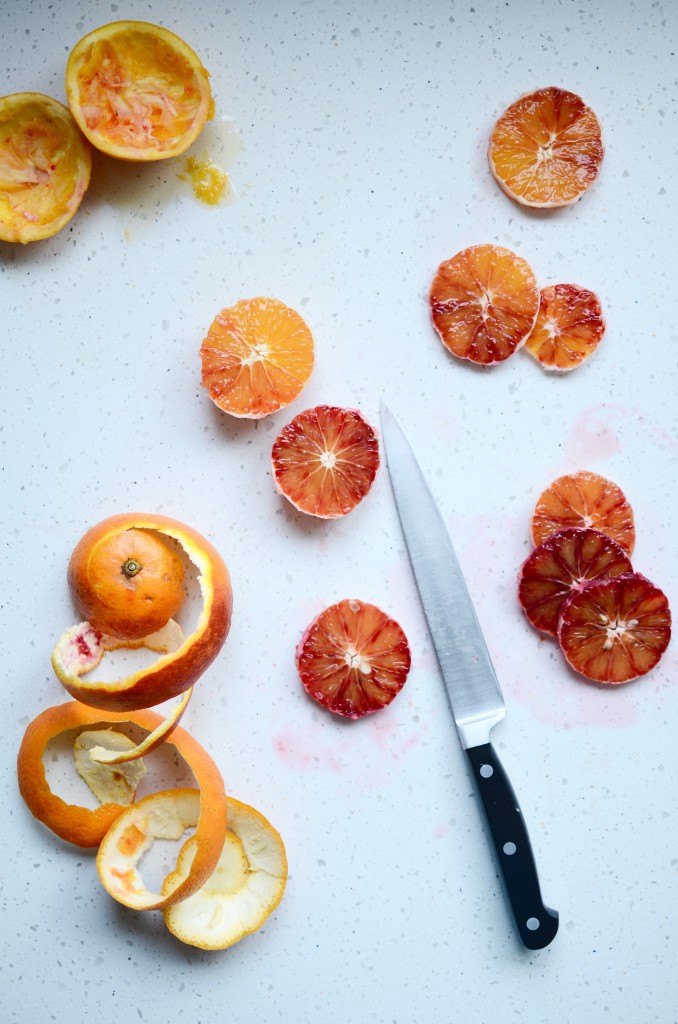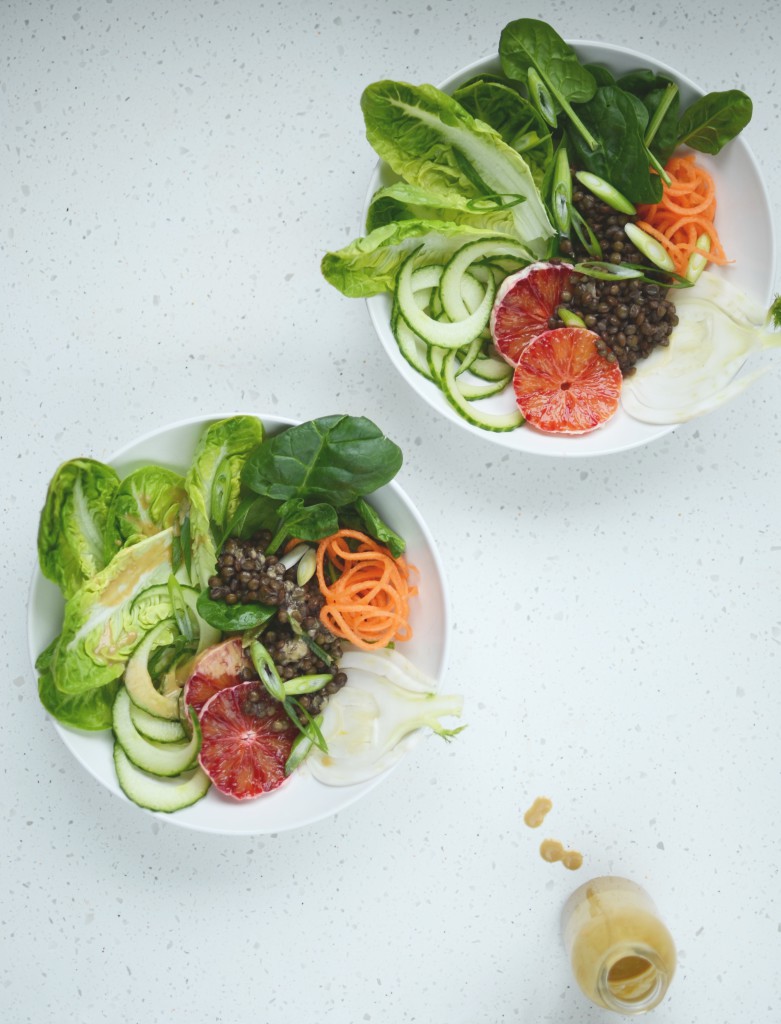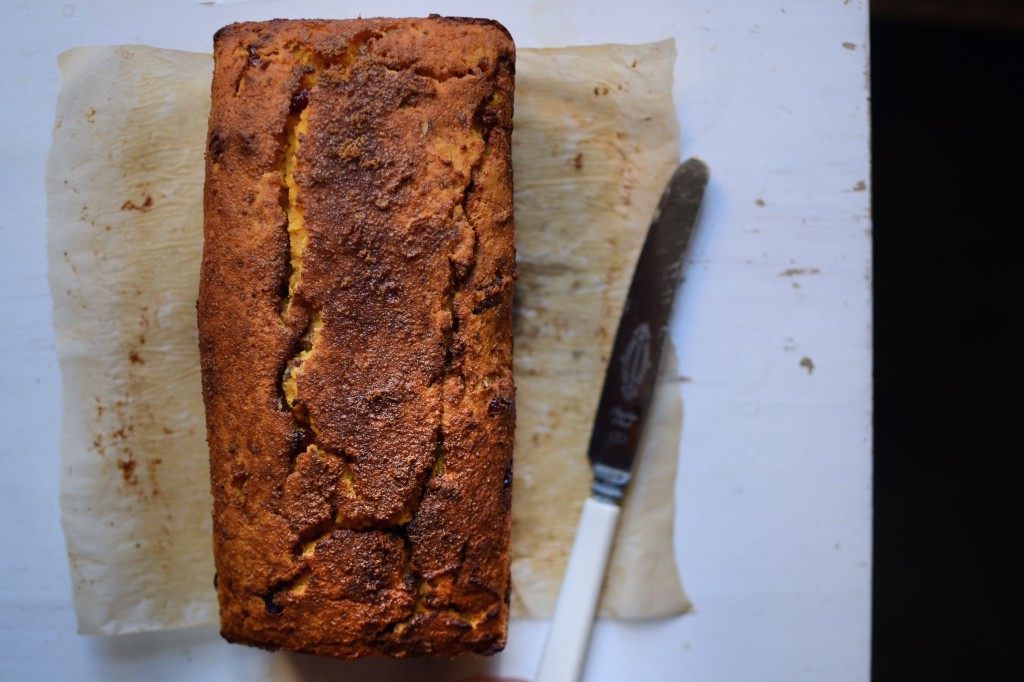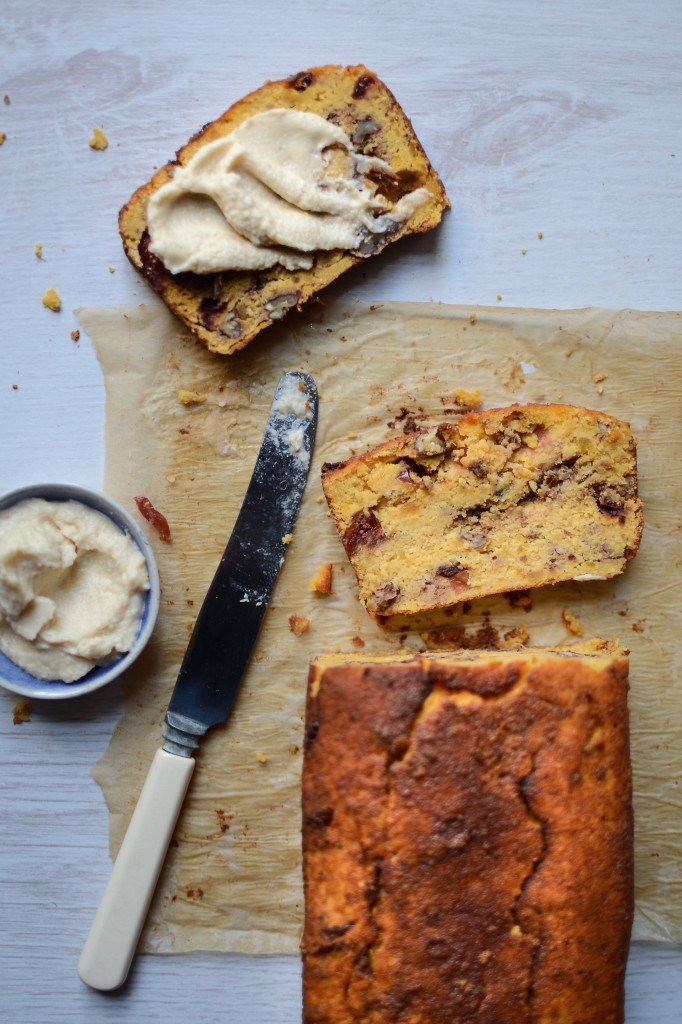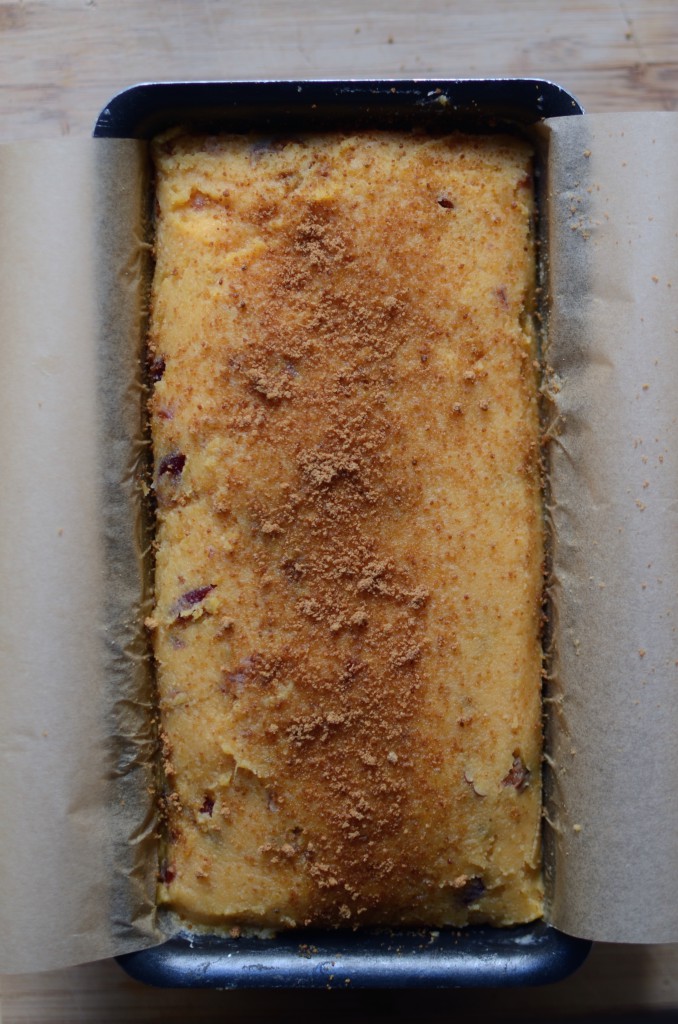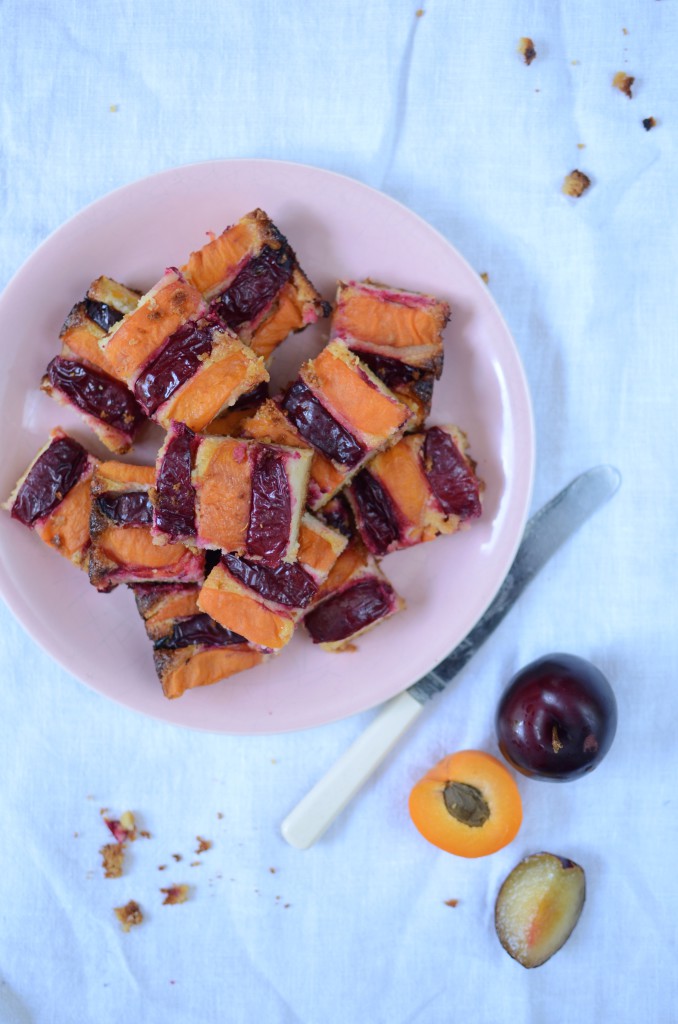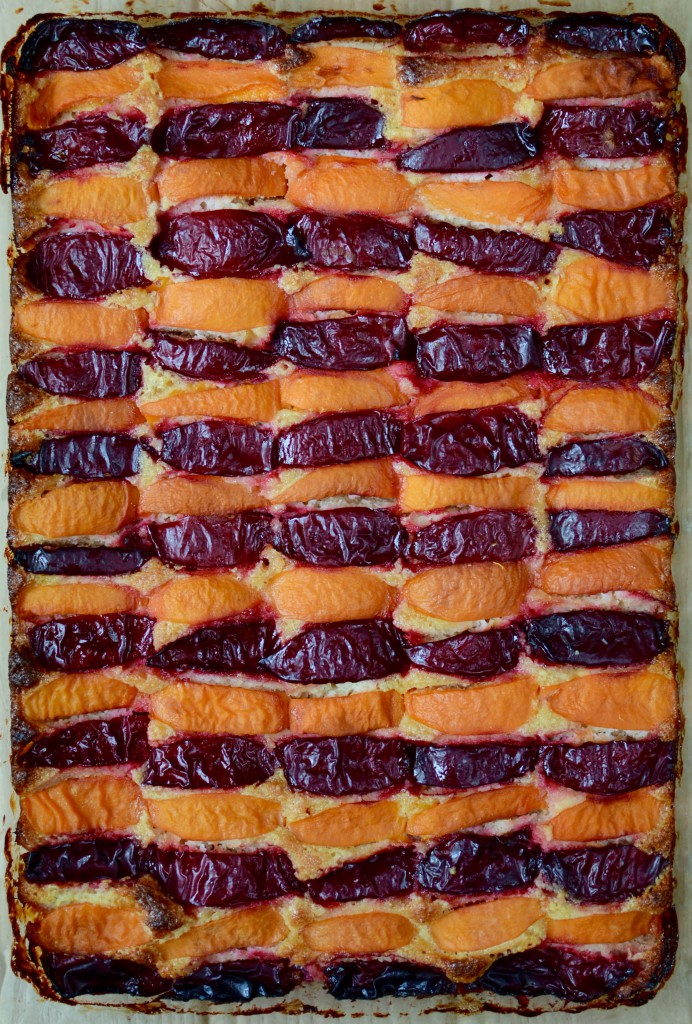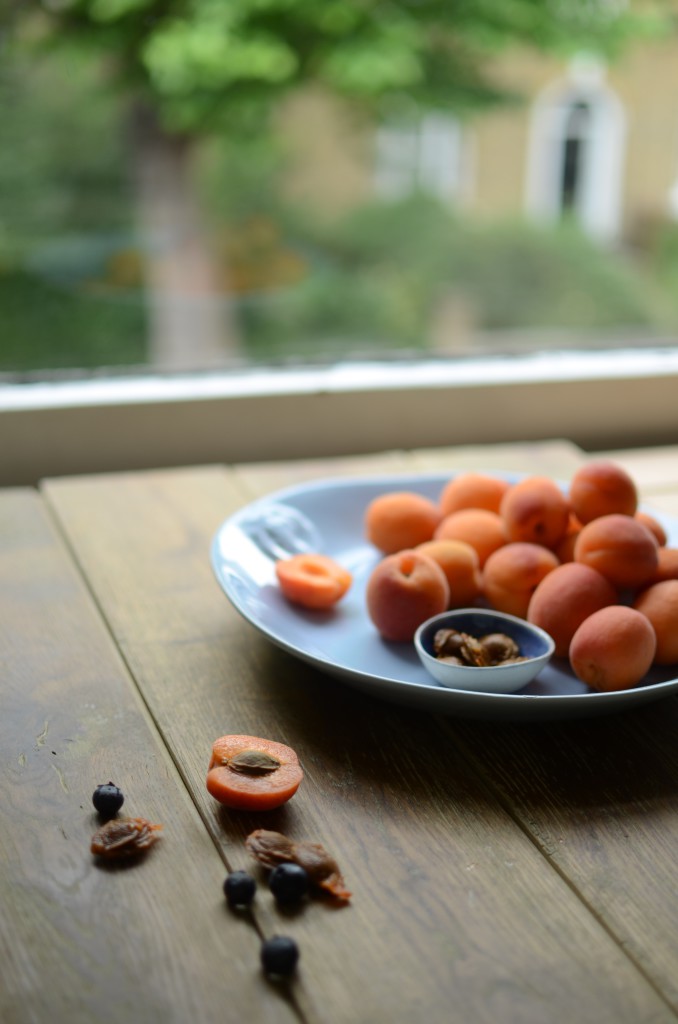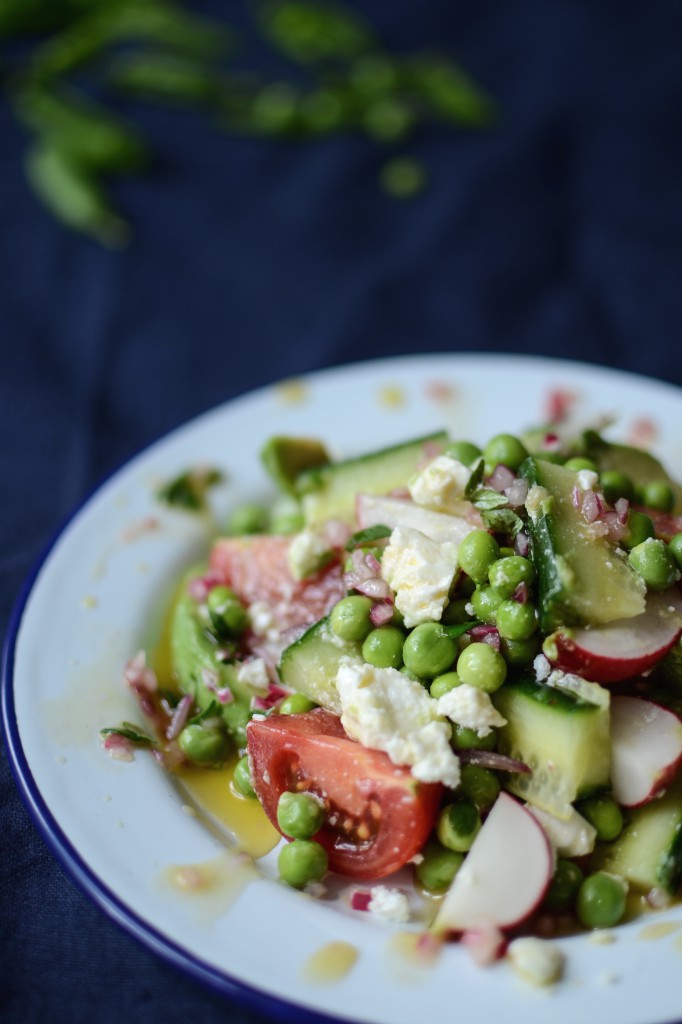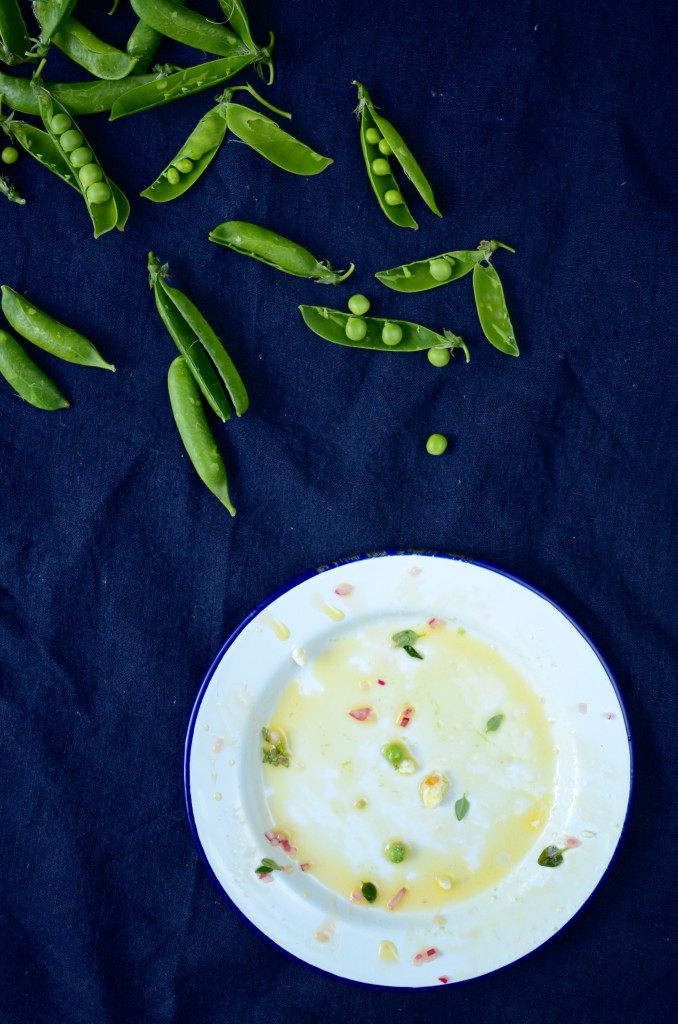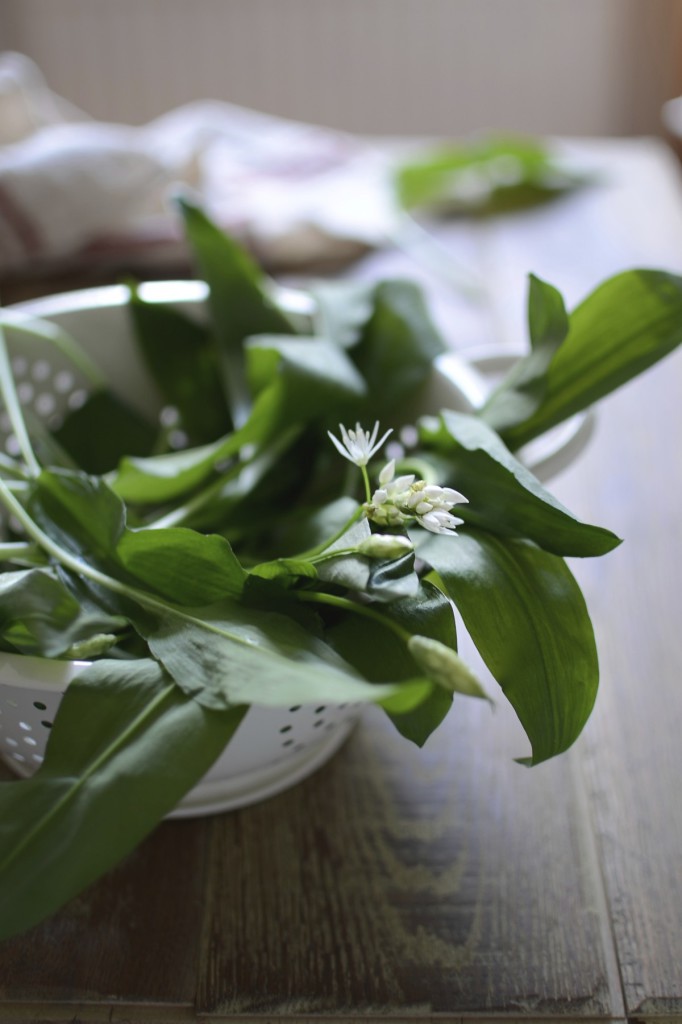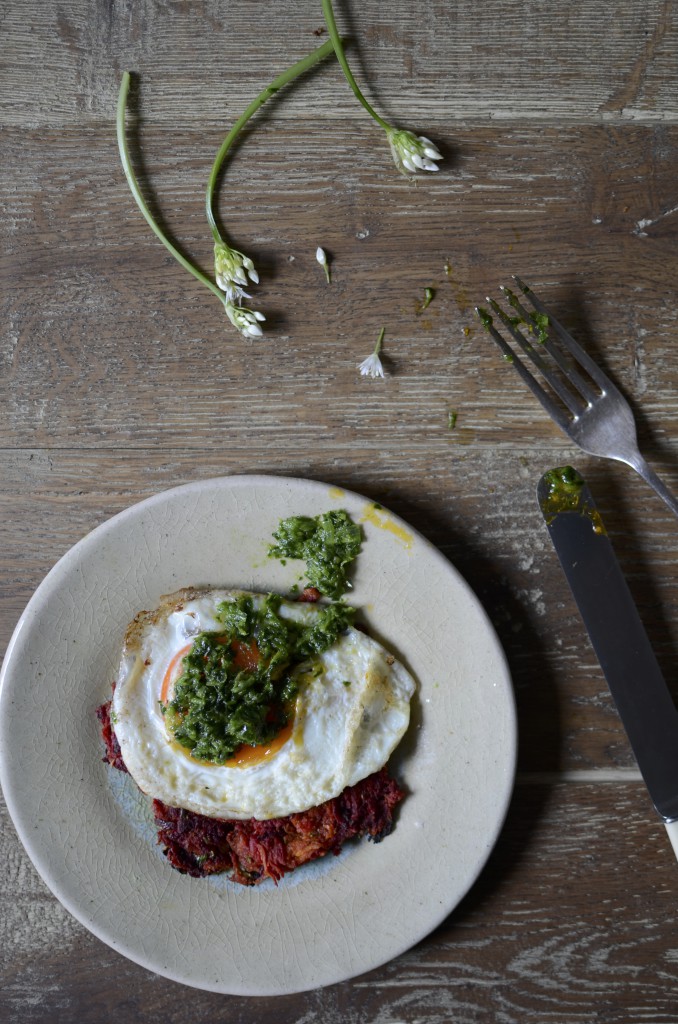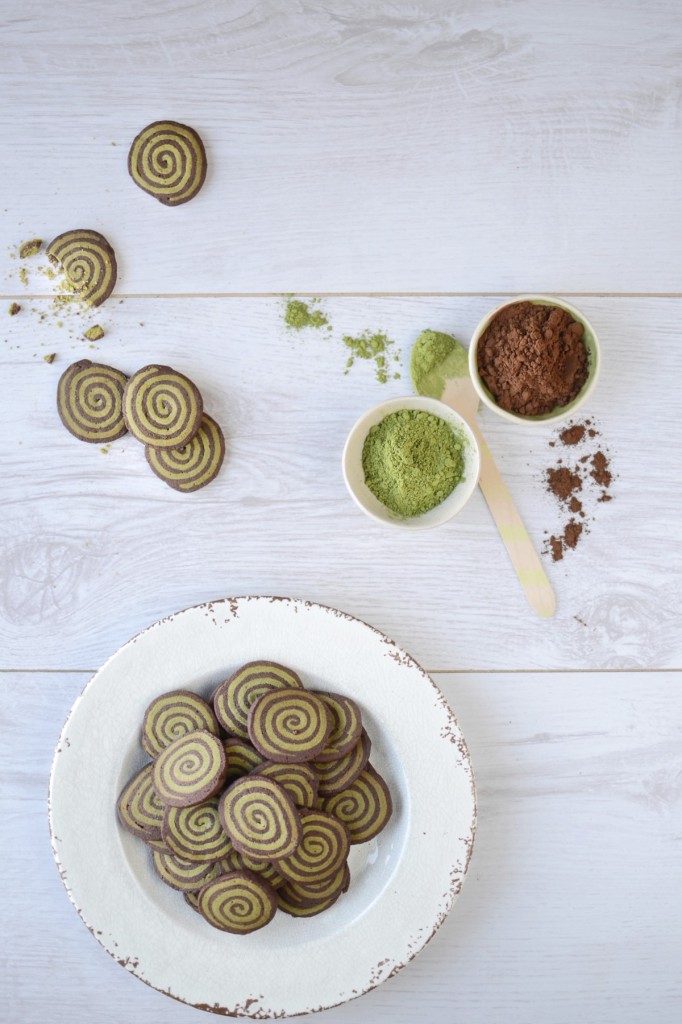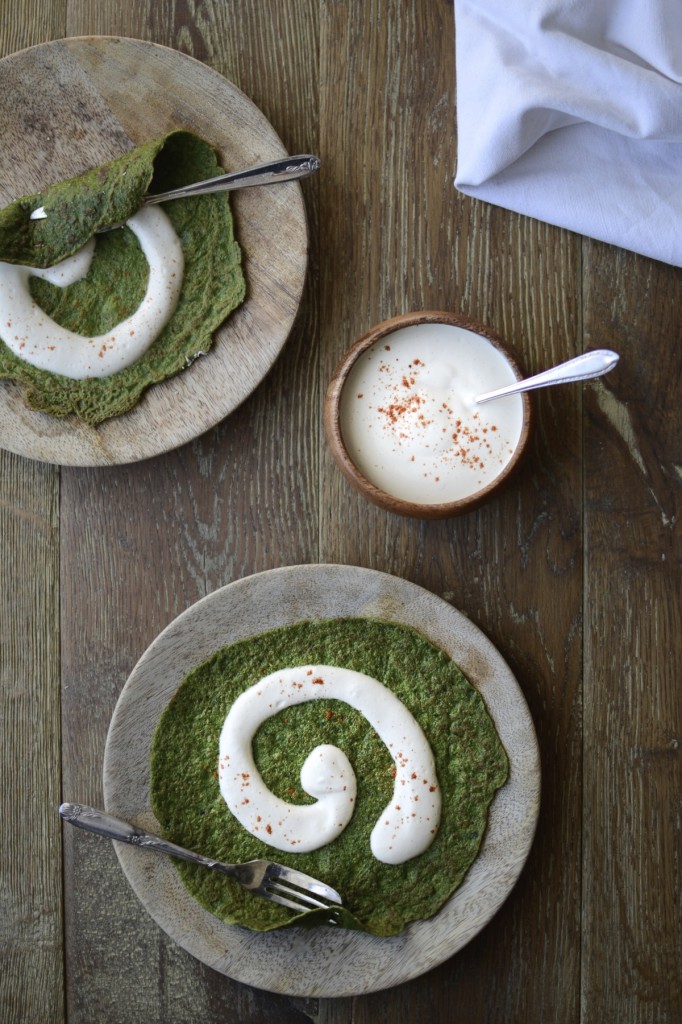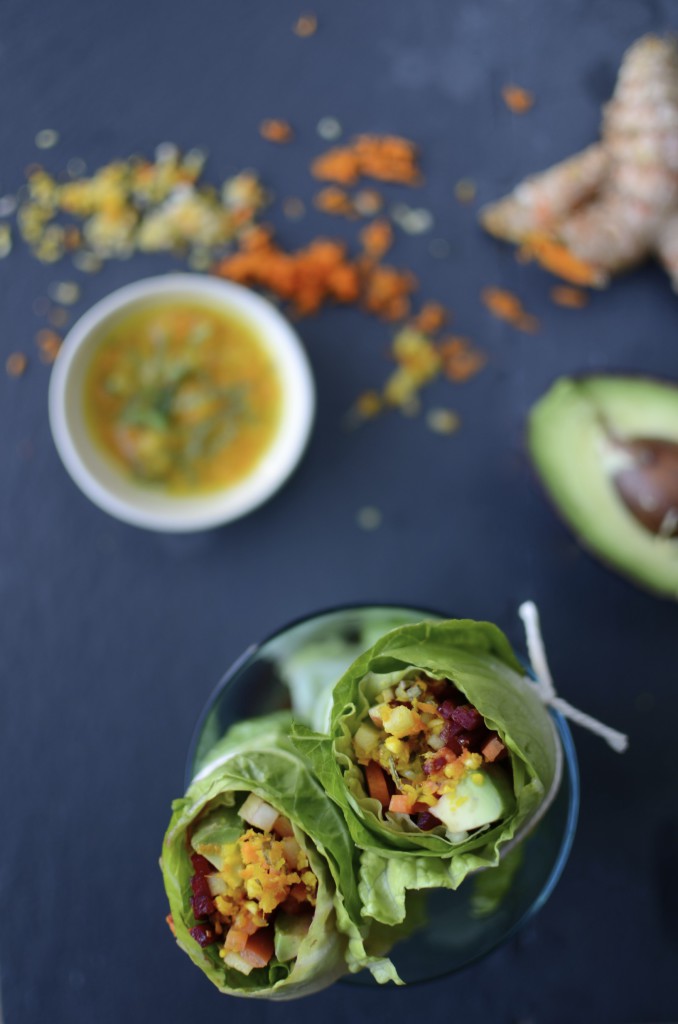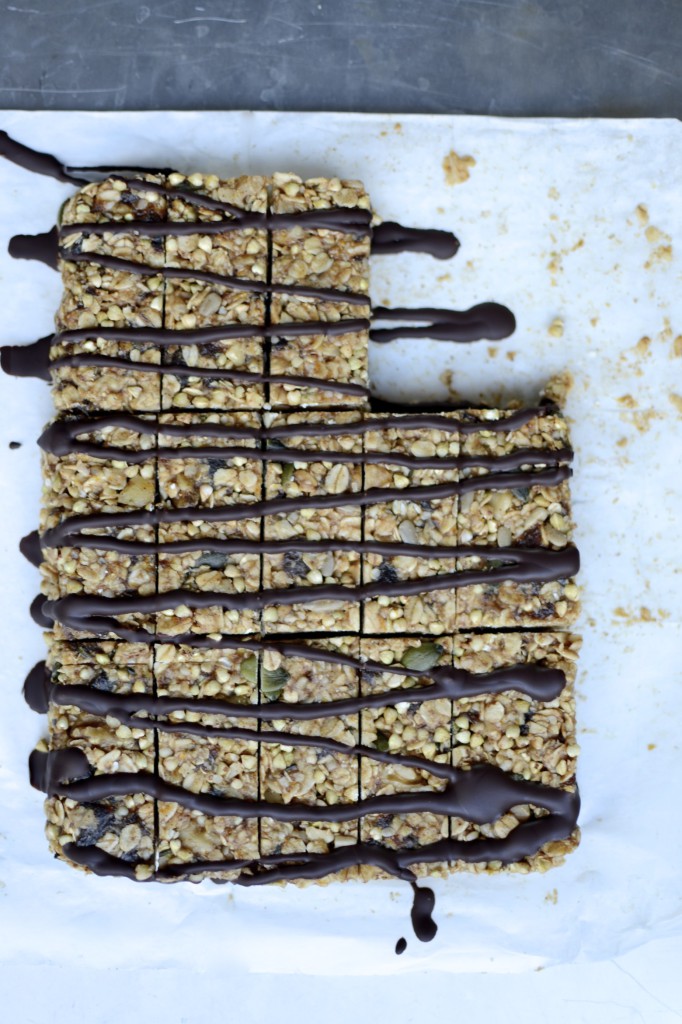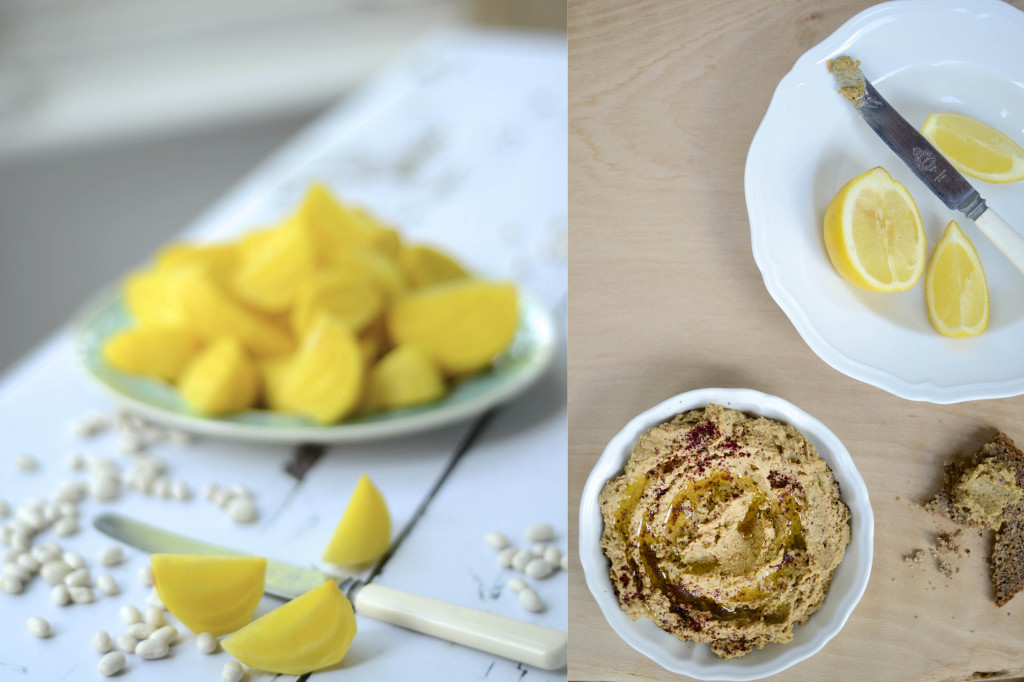A winter salad with blood orange and lentils
I’m not sure that I agree with a strict interpretation of the whole “New Year Detox” thing. At least not if you live in the Northern hemisphere. Sure, cut down on portion sizes and avoid sweet things if you overdid it during the festive season. But why deny yourself warming, filling and indulgent food when it is bound to be cold, dark and wet most of the time? And on the days you do crave something a little fresher, a little bit brighter, a salad such as this one will hit the spot while keeping the winter chills at bay.
Blood oranges are such a treat in the colder months and add a sense of drama to any dish. Before juicing the halves for the dressing, I cut off one slice and add this, with the skin still on, to the blender. This, and the tahini, add a delicious bitterness to the salad, which I find particularly appealing, but feel free to omit it. If you struggle to find the shichimi togarashi spice blend for the dressing, you could make your own by combining 2 tablespoons of chilli flakes, 1 teaspoon coarsely ground sichuan (or black) peppercorns, a tablespoon each of white and black sesame seeds, and dried tangerine or orange peel, 2 teaspoons of ground ginger, and lastly 2 tablespoons of seaweed (nori, wakame flakes or arame). Also remember, when consuming raw spinach, to include foods in the meal that are high in vitamin C (such as blood oranges), as it helps with assimilation of the iron and blocks the oxalate from binding to calcium, encouraging further absorption.
Lentil and blood orange salad
Serves 2 – 4
Ingredients for the dressing
1 blood orange, 1 slice and the rest juiced
80ml (1/3 cup) extra virgin olive oil
15ml (1 tablespoon) tahini
30ml (2 tablespoons) rice vinegar
15ml (1 tablespoon) naturally fermented shoyu or soy sauce
1 tablespoon maple syrup
squeeze of lemon
pinch of sea salt
shichimi togarashi (Japanese 7-spice blend) to taste
Ingredients for the salad
100g (about 1 cup) cooked puy lentils
2 large handfuls of greens, including baby spinach
1/2 large cucumber, sliced
2 blood oranges, peeled and sliced
1 large carrot, grated or thinly sliced
1/2 medium fennel, grated or thinly sliced
2 spring onions, thinly sliced
Method
- Blend together all the dressing ingredients. If you don’t own a high-speed blender, do not add a slice of orange with the peel on, as it will not be ground up smoothly enough. Instead, add some grated zest. Adjust seasoning, ensuring a lovely balance between salty, bitter, sweet and sour.
- Just before serving, toss together the warm lentils, the rest of the salad ingredients and enough dressing to coat.
Sweet potato loaf with apple butter
Some mornings I just need things to happen a little quicker than usual. Avocado on a slice of rye sourdough will always be a favourite, but for something different try baking this loaf the day before. It was born out of my eternal quest to incorporate more vegetables into our daily eating and the kids love it with raw lightly salted butter. As a special treat (and to keep it dairy-free), slather it with the apple coconut butter below. This gorgeous spread keeps well in the fridge for a week or so and is equally delicious stirred into hot porridge, as a topping on pancakes, or on crunchy toast.
Sweet potato loaf
Ingredients
5 medium organic free range eggs, lightly beaten
520g (about 2 cups) mashed cooked sweet potato
1 1/2 teaspoons baking powder
1 teaspoon salt
100g (just over 3/4 cup) coconut flour
1 tablespoon grated fresh ginger
50g (about 1/3 cup) dried cranberries, soaked in juice from 1/2 an orange for at least 2 hours
60g (1/2 cup) pecan nuts, roughly chopped
some coconut sugar to sprinkle over, optional
Method
- Preheat the oven to 180°C / 350°F (or 160°C in a fan oven).
- Grease a medium sized loaf tin and line with parchment paper, allowing the paper to overhang on the long sides.
- Beat together the mashed sweet potato and the eggs until smooth, light and fluffy.
- Sift in the baking powder, add the salt, coconut flour and grated ginger, and mix well.
- Stir in the soaked and softened cranberries, any remaining orange juice and chopped nuts.
- Let the batter sit for 10 minutes to give the coconut flour time to absorb the liquids.
- Pour the batter into the prepared tin, sprinkle over a little coconut palm sugar if using, and bake for 50 minutes or until the top begins to brown and a toothpick inserted in the centre of the bread comes out clean.
- Remove from the oven and allow to cool completely before slicing. Store covered for a couple of days at room temperature or in the fridge for several days. You could also freeze it. Like most gluten-free breads, it is quite fragile and can’t really be slotted into a toaster, but I do sometimes toast it in a medium hot pan in some butter or coconut oil.
Apple and coconut butter
This will only really work if you have a high-speed blender, as the coconut butter is quite solid in anything other than very hot weather and you will end up with a lumpy mess. But if you don’t own one, try gently heating the coconut butter and then stirring in the apple sauce. It won’t be as spreadable, but still pretty darn delicious as a topping.
Ingredients
160ml (2/3 cups) home-made or store-bought apple sauce
70g coconut butter (also called coconut manna or creamed coconut) at room temperature
squeeze of lemon juice
Method
- Pour the apple sauce into the blender, then cut the coconut butter into small chunks and add. If the fat has separated and formed a layer on top of the more crumbly coconut component, make sure you include some of the fat when adding to the apple sauce.
- Blend until smooth. Scrape down the sides once or twice.
- Add lemon juice to taste, blending in between additions.
Stone fruit slices
The memories of my primary school years are punctuated by gloriously colourful events, much-loved traditions, lessons learnt the hard way, meaningful moments… And Maike’s mum’s weekly apricot tray bake. It will forever crop up in my mind as the most delicious treat anyone could wish for. It perfectly captured the balance between soft and chewy, tart and sweet. And it looked and tasted like the summer sun.
Rather than being a cake, this recipe really is more of a nutritious snack that I happily give my children after school and help myself to during busy mornings catching up on admin and work. The end result relies to a large extent on the taste and quality of your fruit, but even so, it is a good way to use up over-ripe, squooshy apricots and plums.
Stone fruit slices
Ingredients
3 medium eggs, at room temperature and separated
80ml (1/3 cup) oil (coconut oil, macadamia nut oil or melted butter)
80ml (1/3 cup) honey
1/2 teaspoon good quality almond extract
pinch of sea salt
finely grated zest of 1 lemon
230g (about 2 1/3 cups) ground almonds / almond flour
750g large apricots and small’ish plums (about 6 of each), halved, stones removed and sliced into eighths
Method
- Whisk together the egg yolks, oil, honey, almond extract, salt and lemon zest.
- Stir in the ground almonds and set aside.
- Preheat the oven to 180°C/360°F.
- Whisk the egg whites to firm (but not stiff) peaks, and gently fold into the almond mixture.
- Spread this mixture out in an even layer in a greased ovenproof baking dish (about 30 x 20 cm).
- Place the fruit slices skin-side up as close together as possible in the thin layer of batter – alternating the fruit as you go along. You could also use apricot halves only, which would be much quicker and easier, but not as pretty.
- Bake in the oven for 30 minutes, then turn the oven off and leave the cake in the oven for another 15 minutes, before removing and allowing to cool.
- Cut the cake into squares in the dish, then carefully slide an offset spatula under each row to carefully lift them out.
- Store in the fridge for several days or freeze.
Freshly podded pea salad
There is nothing quite like freshly podded peas in the early summer months. They are sweet, crunchy and utterly delightful. My little ones adore the process of shelling the peas and then popping them in their mouths, one by one. But don’t let the taste and sensory delight be the only reason you add these tiny gems to your meals. Green peas are rich in protein, fibre, vitamins A, B, C, E & K, and anti-oxidants. They also contain a number of anti-inflammatory phytonutrients not found anywhere else. Later in the season the peas become bigger and starchier, so no longer ideal as a raw snack, but still a wonderfully tasty and nutritious ingredient in many cooked dishes such as minestrone or wilted lettuce.
Serves 2 – 4
Ingredients for the dressing
15ml (1 tablespoon) red wine vinegar
45ml (3 tablespoons) extra virgin olive oil
1 tablespoon finely chopped red onion
1 tablespoon tender thyme leaves
generous pinch of sea salt
Ingredients for the salad
140g (just under a cup) freshly podded peas (about 400g of peas in the pods)
4 vine-ripened capri tomatoes, quartered
1/4 English cucumber, cut into chunks and then sliced
4 large radishes, quartered
1 small ripe avocado, sliced
60g sheep or goat milk feta, crumbled
Method
- For the dressing: put all the ingredients into a small jar, screw on the lid and give it a good shake. Set aside.
- Combine all the ingredients for the salad in a medium mixing bowl, sprinkle a little sea salt on the avocado slices, then pour over about half to 2/3 of the dressing and toss gently. Serve immediately.
Wild garlic and leek sauce
I love greens and the spear-shaped wild garlic leaves (or ramsons and ramps) are no exception. This pungent member of the allium ursinum family is a wonderful combination of onion, garlic, spring onion and chives, with the added bonus of growing quite abundantly in woods and hedges during the spring months. The leaves can be quite stringy, so I often chop them up finely or process them, cooked or raw. The tiny white flowers are edible too and make for a beautiful garnish. This sauce will surprise you with its complexity, yet comforting more’ishness. Enjoy it with egg dishes (such as the fried egg and beetroot rösti below), stirred through pasta or risotto, and with any combination of cheese and carbs you can think of.
Ingredients
1 medium to large leek (about 200g), trimmed, cut in half lengthwise, sliced and washed
1 – 2 medium cloves garlic, roughly chopped
1 bunch wild garlic (about 100g)
1 medium bunch parsley (about 50g), thickest part of stalks discarded
sea salt
125ml (1/2 cup) extra virgin olive oil
squeeze of lemon juice to stir through just before serving
Method
- Fry the leek and garlic in a little butter (or olive oil, if you keep the temperature nice and low) until tender and caramelised.
- Add the wild garlic and stir until wilted. Remove from heat.
- In a food processor, blitz all the leek mix and the parsley until finely chopped.
- With the motor running, add the olive oil in a steady stream through the chute. Add salt (and perhaps some freshly ground black pepper) and taste.
- At this stage I usually divide the sauce between two jars and freeze one of them. Add a squeeze of lemon juice to the other and have with pasta, egg dishes, mashed potatoes or anything cheesy.
Cacao and matcha pinwheels
We all know that regularly enjoying a cup of green tea is beneficial to our health. Matcha powder is a concentrated powdered green tea that can be stirred into hot water to make a cuppa, but also be added to a variety of dishes, such as smoothies, porridge, lattes, chocolate truffles and cakes. The nutritional value and antioxidant content of matcha tea exceeds that of regular green tea tenfold, because the whole leaf, not just the brewed water, is ingested. Amongst its many benefits, matcha is packed with antioxidants, boosts metabolism and burns calories, detoxifies, calms, aids in concentration, contains vitamin C, selenium, chromium, zinc and magnesium, fights against viruses and bacteria, is rich in fibre, and lowers cholesterol and blood sugar. Well worth incorporating into your diet, it seems.
Gluten-free cacao and matcha pinwheel cookies
Makes 50 – 60 cookies, depending on thickness
Ingredients
110g butter, preferably organic and pastured
130 – 140g coconut sugar (you could also use unrefined brown sugar)
1 egg
250g gluten-free flour (try using one that contains no xanthan gum) or wholegrain spelt flour
1 teaspoon baking powder
pinch of salt
15g (2 tablespoons) unsweetened cacao powder
7g (1 tablespoon) matcha green tea powder
Method
- Preheat the oven to 180°C/350°F and line a large baking sheet with parchment paper.
- Cream together the butter and sugar until light and fluffy. Add the egg and mix until well incorporated.
- Combine the flour, baking powder and salt, then fold into the butter mixture.
- Now divide the mixture in half, add the cacao powder to one half and the matcha powder to the other. Use your hands to work the cacao and the matcha into the two balls of dough. The dough will be quite sticky, but should be workable. The matcha half may need a tiny bit more flour.
- Now flatten the cacao dough ball onto a large piece of parchment paper in a rectangular shape. Place another piece of baking parchment on top and roll out until you have a very thin large rectangle. Place in the fridge on a chopping board or tray.
- Repeat the process for the matcha dough half. Remove the cacao rectangle from the fridge, peel off the top piece of paper, and flip over onto the matcha rectangle. Cut off any overhang to patch any gaps.
- Sprinkle the piece of paper that you peeled off the cacao rectangle with flour, then flip the now stuck-together rectangles onto that.
- Carefully start rolling up the dough on the long side until you have a very long and tight sausage. Place this in the fridge for at least 30 minutes before moving on to the next step.
- When completely firm, cut the sausage in half, leave one half in the fridge and slice the other half into thin rounds. Place on the lined baking sheet and bake for 10 to 12 minutes, rotating the sheet once. Repeat for the other half of the sausage.
- Place on a wire rack to cool completely before storing in an airtight container.
Green crêpes with cayenne cashew cream
We love pancakes in any shape and size. And it is one of the easiest way to serve vegetables to your family – either mixed straight into the batter or as a filling. These Tuscan kale crêpes, a.k.a. dragon slayer pancakes, are delicious with a savoury cashew cream, but you could also serve them with grated (preferably unpasteurised) cheddar cheese or goat milk feta. And I usually reserve some of the batter to make a few plain ones to have with honey and lemon as a special Pancake Day dessert.
Ingredients for the crêpe batter
5 medium eggs
240g (2 cups) wholemeal spelt flour
500ml (2 cups) water
large pinch of sea salt
200g Tuscan kale (also known as cavolo nero, dinosaur or lacinato kale), thick cores discarded, roughly chopped
Method
- Steam (or briefly blanch) the kale until wilted, then refresh under ice cold running water.
- Put all the ingredients in a blender and blend until well mixed.
- Set aside for at least 1 hour.
- To make the crêpes, heat a little ghee or coconut oil in crêpe pan until hot, but not smoking. Pour a ladleful of the batter into the pan, turning it while you pour to ensure you cover the base.
- As soon as the edges have browned (after a few minutes), carefully slide a spatula under the crêpe and flip it over for another couple of minutes. Repeat until all the batter has been used up.
Ingredients for the cashew cream
125g (about 1 cup) cashew nuts, soaked for 2 – 4 hours in fresh cold water
100 – 125ml (about 1/2 cup) water
large pinch of sea salt
1 teaspoon nutritional yeast flakes
generous squeeze of lemon
large pinch of cayenne pepper
Method
- Rinse the soaked cashews thoroughly, then place in a blender with just under half a cup of water (about 100ml), salt, nutritional yeast, lemon juice and cayenne, and blend until creamy.
- If you don’t have access to a high speed blender, the resultant cream will have a coarser texture.
- Adjust seasoning and spoon onto a green crêpe before rolling up.
The New Year Reboot Roll
Take a look at my guest post on the Natural Gourmet Institute’s blog for instructions on how to make these guys… Oh – and happy 2015 everyone!
Oat and buckwheat crispie fridge bars
The moment you start changing your eating habits by steering clear of processed foods, refined sugar and white flour, your taste buds begin to transform. Suddenly, overly salty or super sweet food does not do it for you anymore, and you automatically adjust the way you cook, like adding less sugar to cake batters because you know it will still be sweet enough… Anyone who has discovered the joy of dark chocolate will know what I mean. Milk chocolate will never again be your first choice.
Every now and then, however, even I can appreciate the pleasure of a toe-curlingly sweet treat. After a long park run on a cold morning, or with a gorgeous cup of tea and your favourite book. It is for moments such as these that I usually keep a few of the buckwheat crispie bars in the freezer. They are crunchy and syrupy, and a honey bee’s dream.
Ingredients
80ml (⅓ cup) liquid coconut oil
125ml (½ cup) organic smooth peanut butter
125ml (½ cup) runny honey, preferably raw
large pinch fine grain sea salt
2 teaspoons cinnamon
1 1/2 teaspoon ground ginger
zest of 2 medium organic oranges
200g (about 2 cups) rolled oats
140g (about 1 cup) sprouted buckwheat groats* (dehydrated or dried in low temp oven)
100g walnuts, chopped (yields about 1 cup)
160g dried organic apricots, chopped into small chunks (yields about 1 cup) dried sour cherries for a less sweet bar
60 – 80g (about ½ cup) mixed seeds (chia, sunflower, pumpkin, sesame, hemp)
30g melted dark chocolate to garnish (optional)
Method
- Ensure all the ingredients are at room temperature.
- Whisk together the peanut butter, honey, coconut oil, salt, cinnamon, ginger and orange zest until well mixed.
- In a large bowl combine the oats, buckwheat, walnuts, apricots or cherries, and seeds. Ensure the apricot pieces are separated and coated in oats. buckwheat and / or seeds – use your fingers to do this.
- Pour the dry ingredients into the peanut butter mixture and stir well.
- Line a Swiss roll pan with greaseproof paper, allowing for an overhang on the long side of the tin.
- Spoon the mixture into the pan, pressing down firmly with the back of the spoon or your fingers until it is very tightly packed all the way into the corners.
- Now refrigerate the tray for at least 2 to 3 hours or place in the freezer for roughly 1 hour.
- When firm, lift the granola mixture out of the tin and onto a chopping board by grabbing hold of the greaseproof paper.
- Cut the slab into small bars or squares. If you are using chocolate, place the sheet with the bars back in the Swiss roll tin.
- Spoon the melted, slightly cooled, chocolate into a small sandwich bag. Twist the top and then snip off one tiny corner. Use like a piping bag to drizzle chocolate over the bars.
- Return the bars to the fridge until the chocolate has set, then store in an airtight container, preferably in the fridge or freezer.
Note: *To sprout raw, un-roasted buckwheat (not kasha), soak 2 cups of groats in three times the amount of fresh water for 12 to 18 hours, changing the slimy water once during this time. Then drain, rinse off any sliminess, and leave in a sprouting jar, mesh bag or sieve, loosely covered with a kitchen towel or cloth for a day or two, rinsing well twice a day. Once most of the grains have started sprouting (you will see a little tail forming), spread them all out on a tray or baking sheet and dry in a dehydrator or at a very low temperature (about 65°C) in the oven until crisp (usually this takes 12 to 24 hours). This low temperature is essential to preserve the enzymes in the sprouts, but if you are pressed for time, you could increase the temperature, thereby reducing the baking time.
Golden beet & haricot bean dip
One of the tricks I often rely on to encourage the whole family to eat more vegetables is to offer crudités before the main meal – when everyone is starting to feel really hungry. Another is to incorporate vegetables into as many dishes as often as possible. Here is a recipe that will give you the opportunity to be most cunning and do both!
Ingredients
1/2 cup haricot / cannellini beans, soaked for at least 24 hours in filtered water
2 cloves garlic
1 small onion, peeled and halved
1 bay leaf
Small (2cm or 1”) strip kombu / kelp
500g golden beets, washed and peeled
1 tablespoon coconut oil
5 to 6 sprigs fresh thyme, leaves picked
Sea salt and freshly ground black pepper
2 tablespoons tahini
2 tablespoons extra virgin olive oil
Juice of 1 – 2 lemons, depending on taste
1 teaspoon sumac
Method
- Bring the beans, 1 garlic clove, onion, bay leaf and kombu to boil in a pot with enough salted water to generously cover the beans. Simmer until beans are tender, skimming off any froth that forms on the surface.
- While the beans are cooking, toss the beets in the liquid coconut oil, add the thyme leaves and season with salt and pepper. Roast in a moderately hot oven (160°C / 320°F) for about 40 to 50 minutes, or until the beets are tender.
- When the beans and beets are both tender, add them to the bowl of a food processor, together with the tahini, olive oil, lemon juice, the other clove of garlic and salt and pepper. Use the bean cooking liquid if you need to thin the dip a little.
- Sprinkle over some sumac just before serving.

